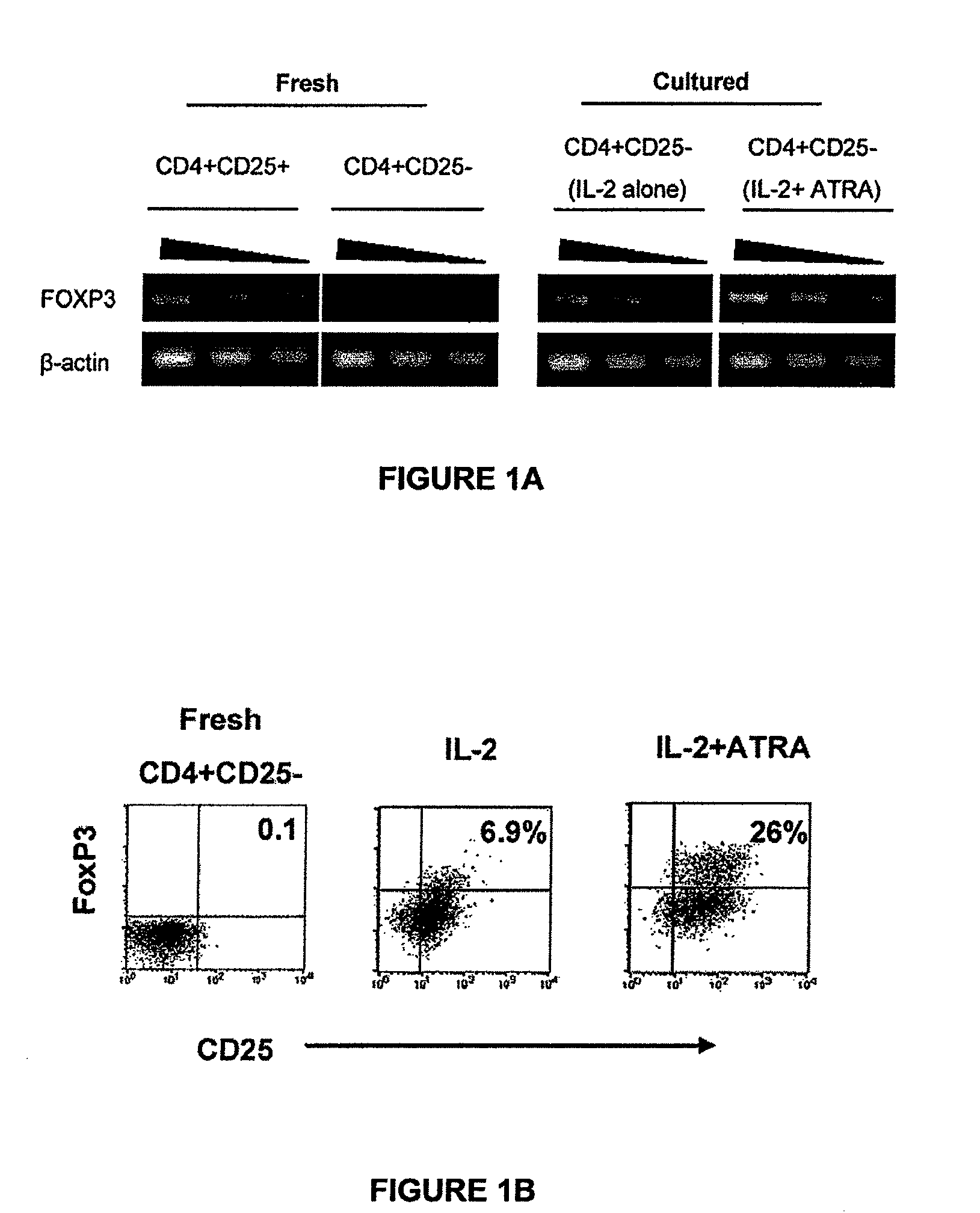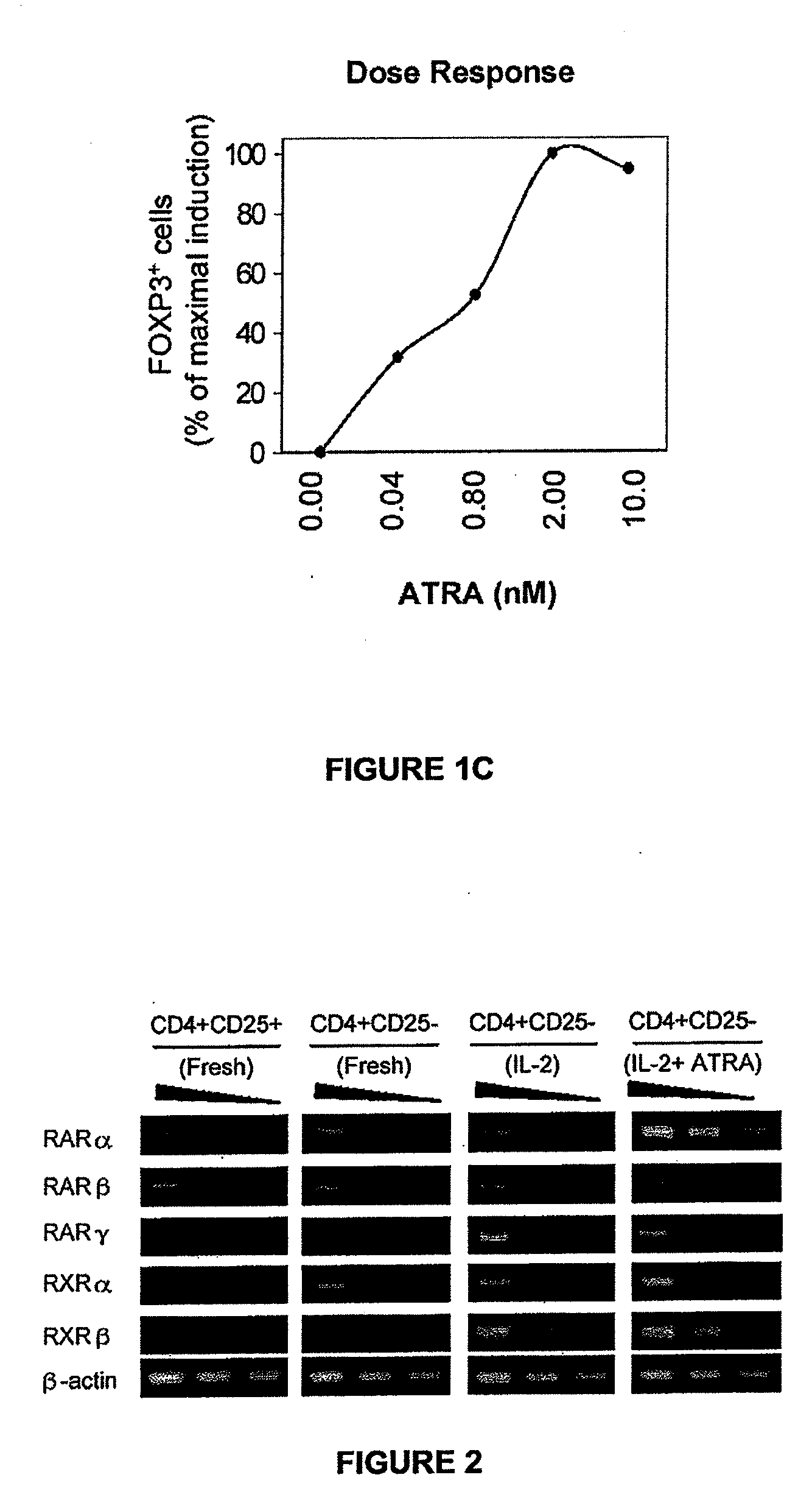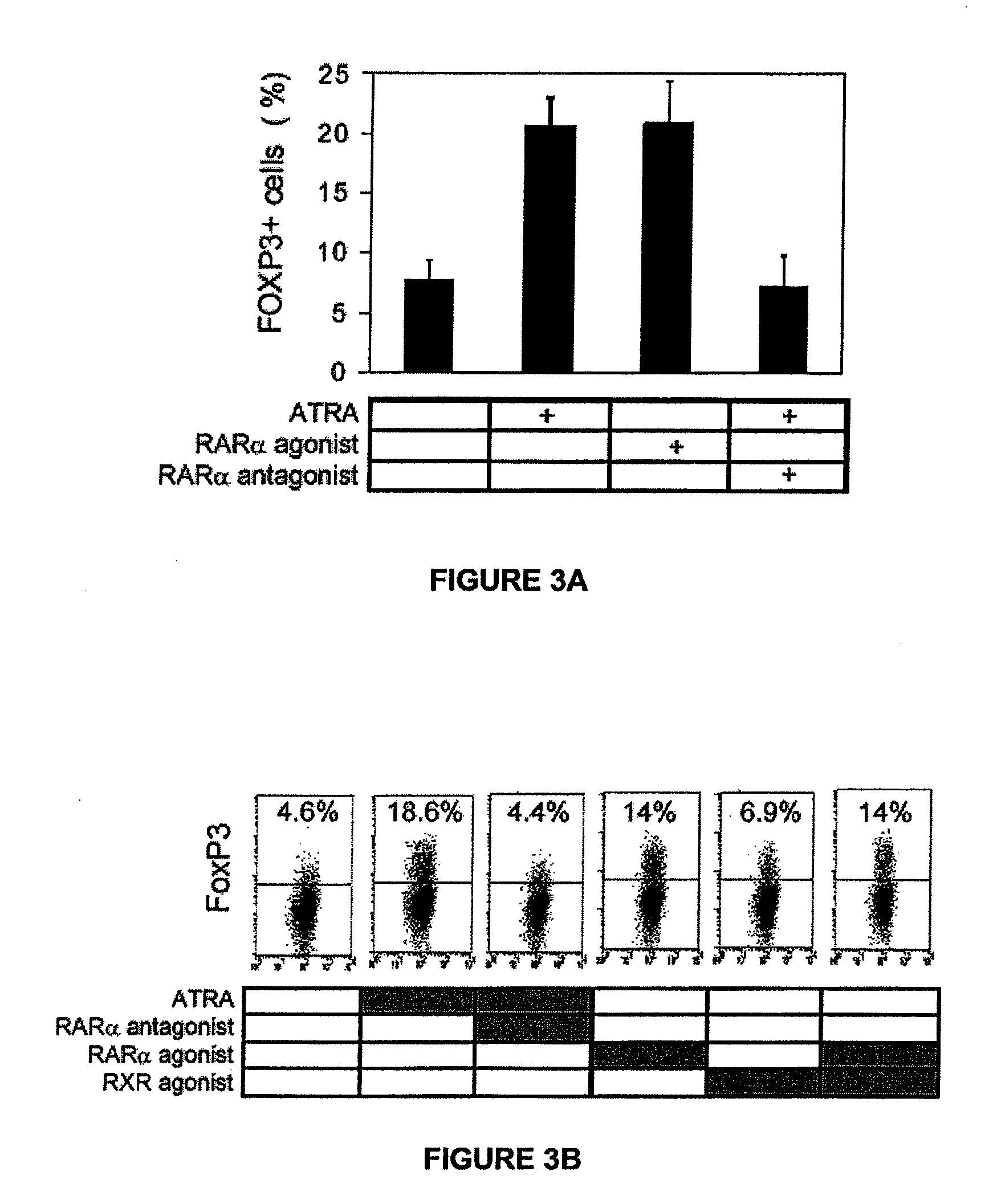Methods for controlling inflammatory and immunological diseases
a technology of immunological diseases and inflammatory processes, applied in the direction of immunological disorders, drug compositions, biocides, etc., can solve the problem that rxr agonists alone cannot dissociate co-repressors, and achieve the effect of boosting the immune respons
- Summary
- Abstract
- Description
- Claims
- Application Information
AI Technical Summary
Benefits of technology
Problems solved by technology
Method used
Image
Examples
example 1
[0045]All-trans-retinoic acid (ATRA), a major vitamin A metabolite, induces FoxP3 expression in T cells. FoxP3 is the master transcription factor for CD4+CD25+ regulatory T cells. The majority of CD4+CD25+ cells are FoxP3+, whereas most CD4+CD25− cells are FoxP3−. Neonatal human cord blood CD4+CD25− naïve T cells were cultured in a T cell activation condition with IL-2 (25 U / ml) and phytohemagglutinin (PHA, 5 μg / m) in the presence or absence of all-trans retinoic acid (ATRA, 2 nM) for 6 days. Naïve CD4+CD25− T cells were activated in the absence and presence of ATRA, and examined for expression of FoxP3 mRNA and protein by RT-PCR analysis (FIG. 1A), flow cytometry analysis (FIG. 1B) and dose-dependent induction of FoxP3 by ATRA (FIG. 1C). Representative data from at least three independent experiments are shown. The T cells, activated in the presence of IL-2, expressed the FoxP3 mRNA (FIG. 1A). When the T cells were cultured with both ATRA and IL-2, the levels of FoxP3 mRNA expressi...
example 2
[0046]RARα is induced in ATRA-treated T cells. RARα, RARβ and RARγ are the major receptors that are likely to mediate the function of ATRA. The mRNA expression of RARs and RXRs in freshly isolated CD4+CD25+ and CD4+CD25− T cells was determined, as well as in CD4+CD25−T cells activated in ATRA. Neonatal human cord blood CD4+CD25− naïve T cells were cultured in a T cell activation condition with IL-2 (25 U / ml) and PHA (5 μg / ml) in the presence or absence of ATRA (2 nM) for 6 days. Freshly isolated CD4÷CD25+ and CD4+CD25− cells are shown for comparison. RT-PCR was performed, and a representative set of results out of 4 independent experiments are shown.
[0047]The most highly expressed receptor in response to ATRA was RARα among the 6 RAR and RXR family receptors. Expression of RARα& RARβ and RXRγ at low levels was detected in freshly isolated CD4+CD25+ and CD4+CD25− CD4 T cells (FIG. 2).
example 3
[0048]Retinoids induce FoxP3 expression in T cells through RARα. As RARα can be induced in T cells in response to ATRA, the function of this receptor in induction of FoxP3 was examined using an RARα antagonist, Ro41-5253. The RARα antagonist, Ro41-5253 completely suppressed the FoxP3+ cell induction effect of ATRA. An RARα, but not the RXR, agonist (methoprene acid), was able to induce FoxP3. FoxP3 protein expression in CD4 T cells, determined by intracellular staining by PE-labeled anti-FoxP3 antibody, is shown as FACS dot plots (FIG. 3A) and graphs (FIG. 3B). Neonatal human cord blood CD4+CD25− T cells were cultured in a T cell activation condition with IL-2 (25 U / ml ) and PHA (5 μg / ml) in the presence and absence of indicated agonists or antagonists for 6 days. The concentrations used to obtain the data were 2 nM (ATRA), 1 μM (Ro41-5253), 5 nM (AM-580), and 10 μM (methoprene acid). Data from four independent experiments were combined (FIG. 3B).
[0049]The RARα antagonist completely...
PUM
| Property | Measurement | Unit |
|---|---|---|
| concentration | aaaaa | aaaaa |
| affinity | aaaaa | aaaaa |
| resistance | aaaaa | aaaaa |
Abstract
Description
Claims
Application Information
 Login to view more
Login to view more - R&D Engineer
- R&D Manager
- IP Professional
- Industry Leading Data Capabilities
- Powerful AI technology
- Patent DNA Extraction
Browse by: Latest US Patents, China's latest patents, Technical Efficacy Thesaurus, Application Domain, Technology Topic.
© 2024 PatSnap. All rights reserved.Legal|Privacy policy|Modern Slavery Act Transparency Statement|Sitemap



